Imagine what characteristics you would want in the perfect shrub. How about one that blooms throughout the year, loves hot temperatures but can handle cooler ones, all while needing no pruning? Would you add one to your landscape? Well, imagine no longer, because there is a shrub that has all of these characteristics and one other — drought tolerance. ‘Blue Bells’ is the latest of a string of plants adapted to arid conditions that come to us from Australia. Not only do they add beauty to our landscapes, but they also thrive in desert gardens throughout the United States.
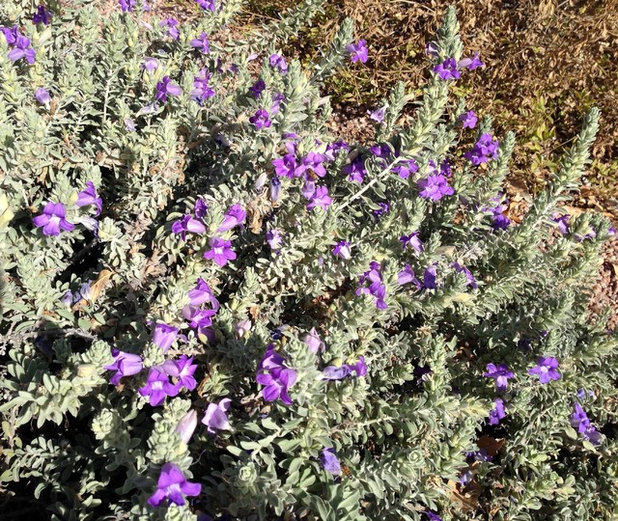
Noelle Johnson Landscape Consulting
Botanical name: Eremophila hygrophana ‘Blue Bells’
Common names: ‘Blue Bells’, blue emu
Origin: Native to Australia
Where it will grow: Hardy to 17 degrees Fahrenheit (USDA zone 8; find your zone)
Water requirement: Low
Light requirement: Full sun
Mature size: 3 feet tall and 3 to 4 feet wide
Benefits and tolerances: Drought tolerant once established, but looks best when watered once a week in the summer and twice a month in spring and fall. Water once a month in winter.
Seasonal interest: Flowers throughout the year; attracts hummingbirds.
When to plant: Fall or spring
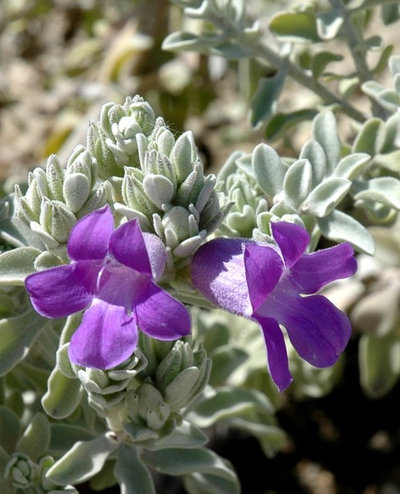
Noelle Johnson Landscape Consulting
Distinguishing traits. ‘Blue Bells’ recently came from Australia to the United States, where it has been getting rave reviews from those who grow it throughout the Southwest.
The gray foliage and violet-blue flowers of ‘Blue Bells’ closely resemble those of silver-colored sages, such as ‘Thunder Cloud’ (
Leucophyllum candidum ‘Thunder Cloud’) and ‘Blue Ranger’
(
Leucophyllum zygophyllum ‘Blue Ranger’)
but are completely unrelated.
While sharing many similarities with some
Leucophyllum species, these new arrivals do something that the others don’t — they bloom all year long. Hummingbirds are also giving this shrub rave reviews, because it has flowers throughout the year for them to feed upon.
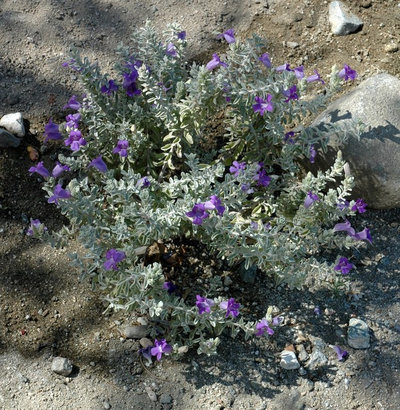
Noelle Johnson Landscape Consulting
‘Blue Bells’ have a rather slow growth rate and average only 3 feet tall and wide. As a result, they rarely need any pruning.
Their growth habit is compact and informal, while tiny hairs give their leaves a fuzzy feel while helping to reflect the sun’s rays and keep too much water from being lost to evaporation.
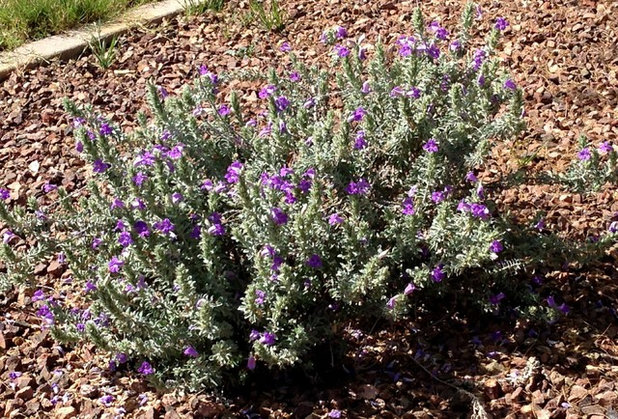
Noelle Johnson Landscape Consulting
The only potential problem with ‘Blue Bells’ is overwatering. Well-drained soil is an absolute must, as is deep, infrequent watering. A general guideline is to water once a week in summer, twice a month in spring and fall, and once a month in winter.
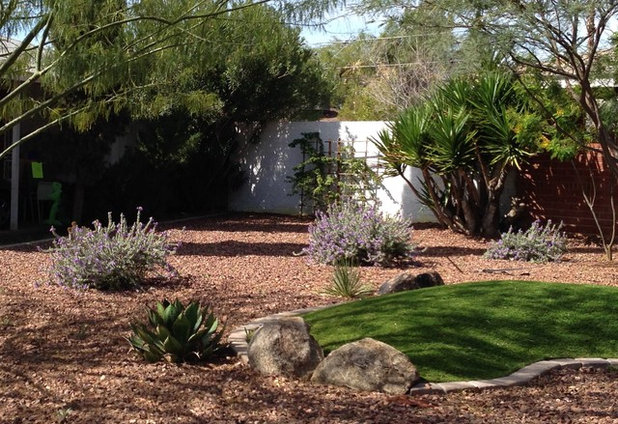
Noelle Johnson Landscape Consulting
How to use it. Use it alongside walkways and patios where the flowers can be enjoyed. Don’t plant too closely to lawn areas or swimming pools where excess water can become a problem.
Plant ‘Blue Bells’ in front of other drought-tolerant plants, such as red fairy duster (
Calliandra californica)
, Valentine or
chuparosa (
Justicia californica),
whose darker foliage will contrast beautifully with the gray foliage of ‘Blue Bells’.
Yellow-flowering ground covers such as angelita daisy and damianita also make an attractive arrangement when planted nearby.
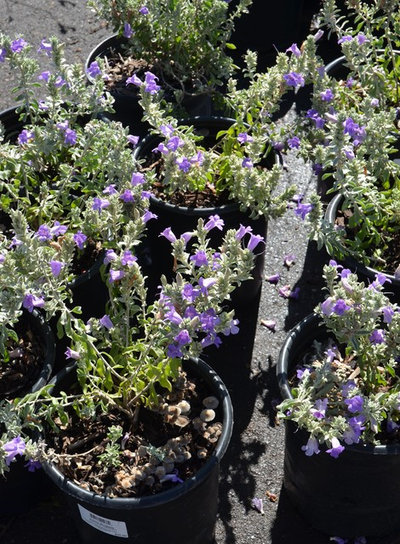
Noelle Johnson Landscape Consulting
Planting notes. Plant in well-drained soil in an area that receives full sun. Avoid shady locations where the soil can take a while to dry out. No fertilizer is required, since these shrubs are accustomed to growing in nutrient-poor soils.
See more ways to save water in your landscape





